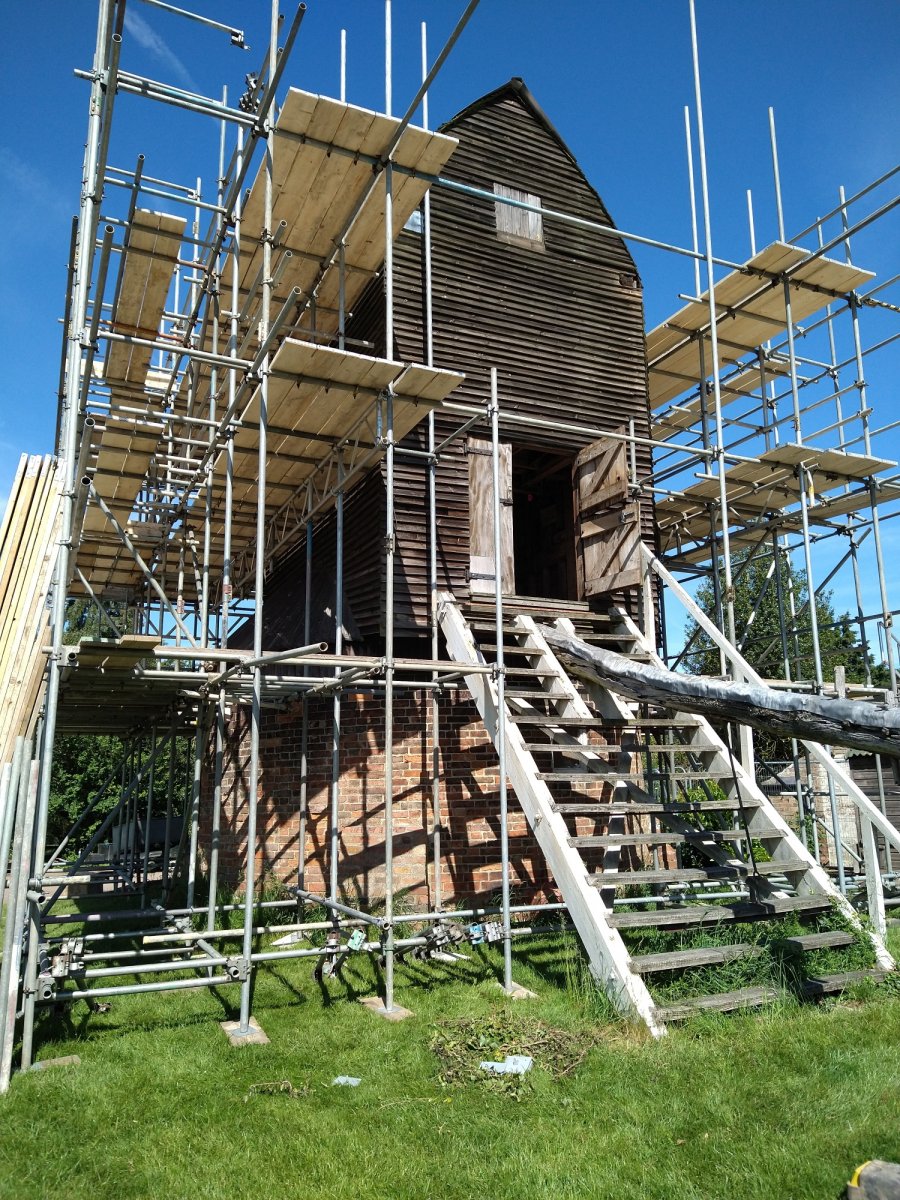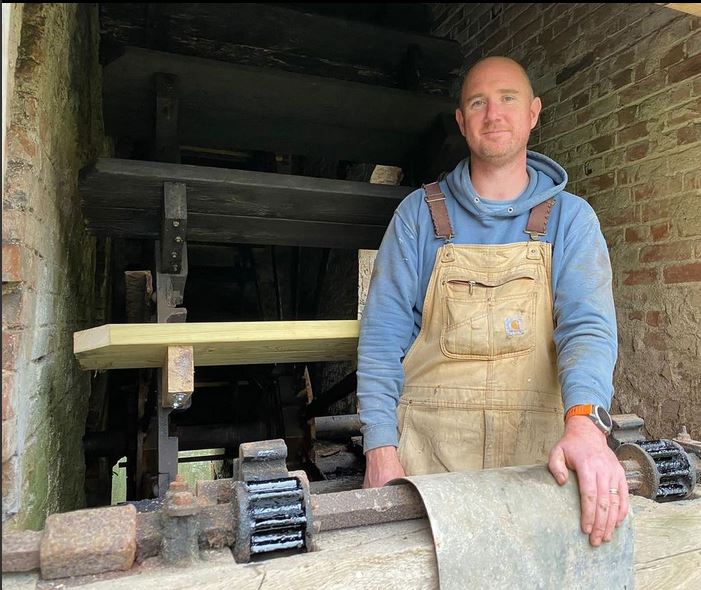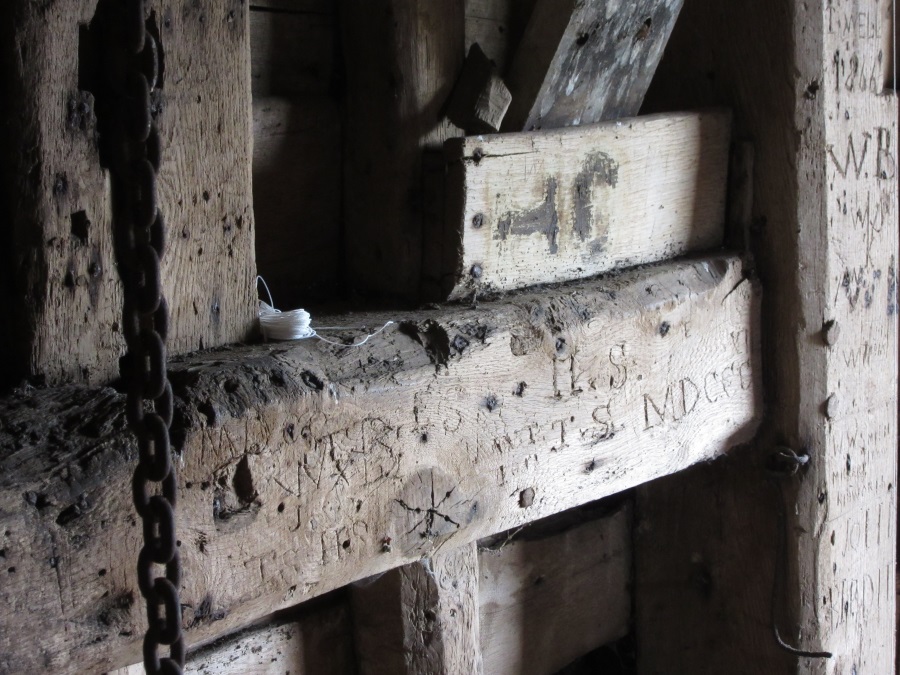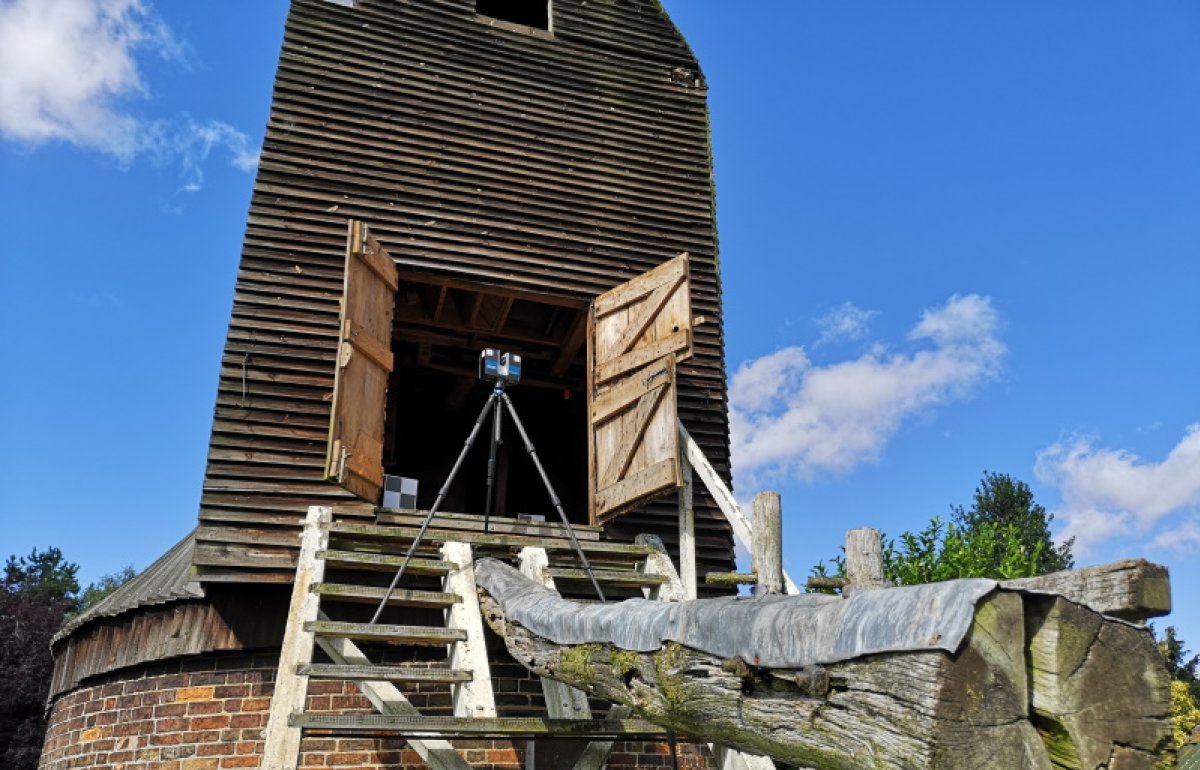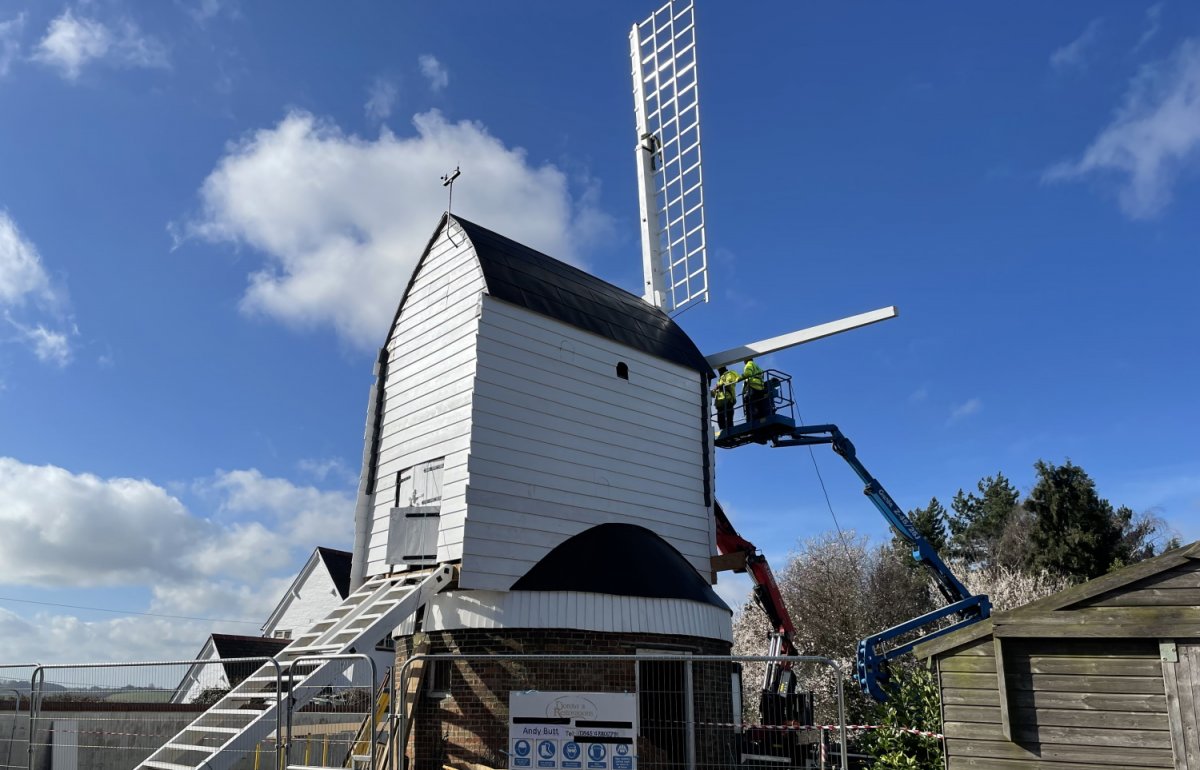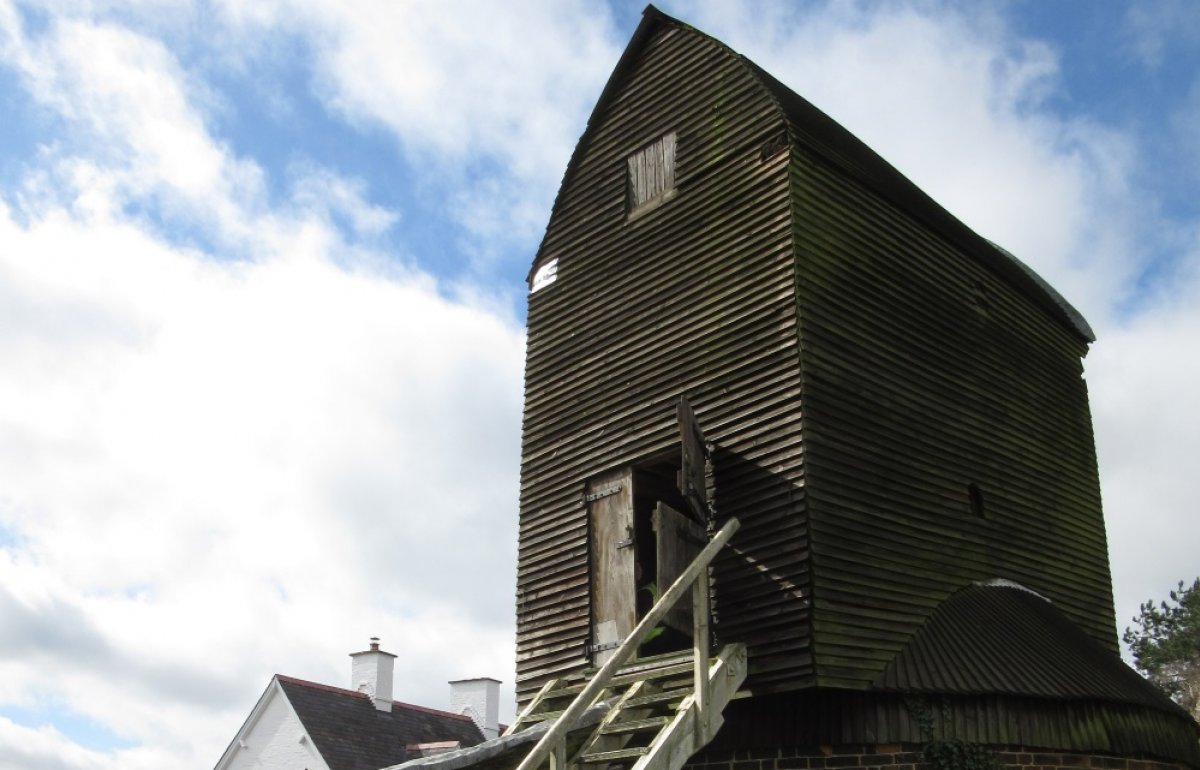Major repairs and millwright training at Kibworth Harcourt Mill
Share on:
Works continue at our post mill, the last remaining mill of its kind in Leicestershire. The early 18th-century windmill has been owned by the SPAB since the 1930s, but has not been operational for many years. It remains a resilient reminder of historic rural industry.
The mill under scaffolding. Credit: Dorothea Restorations
Thanks to a generous bequest we can repair the mill and provide a traineeship for a future millwright. Toby Slater, a talented carpenter and 2021 SPAB Fellow, has been working alongside our contractor Dorothea Restorations to learn the endangered craft of millwrighting.
Toby at Charlecote Mill learning from SPAB Fellow Karl Grevatt. Credit: Toby Slater
Toby has spent several weeks on site at Kibworth with the team from Dorothea working on repairs to the building’s timber structure. At Dorothea’s studio, Toby has been constructing new sails and crafting the new oak external steps for the mill. Watch a video showing Toby at work and where he explains what's drawn him to millwrighting.
In September, Dorothea successfully jacked the 15-tonne buck (body of the mill) onto its temporary steel support framework to enable the trestle timber repairs to start. The process was slow and delicate. Datum levels (a surface from which other levels can be measured) were installed throughout the buck and roundhouse as the buck was gently raised by 150 mm, in 5 mm and 10 mm increments.
We discovered that the trestle timbers have severely decayed. The trestle is the substructure of a post mill, comprising the main post, cross trees and quarterbars. This decay was expected since repairs carried out in the 1930s included large softwood side plates bolted to the joint between the quarter bars and the cross trees. Once these plates were removed, the severity of the decay was revealed and very little of the original timber remained. New oak sections are being scarfed onto the sound timber to re-establish the original joint. When the repairs are complete, the softwood side plates will be re-installed – they did, after all, assist the mill structurally for nearly a century and show its development over time.
Carved graffiti in the interior of the mill. Credit: SPAB
Another fascinating marker of time is the 200 graffiti markings found throughout the mill. Buildings archaeologist, James Wright has surveyed and interpreted the markings for us. Initials, dates, names, sketches and protection marks are a fascinating insight into the lives of the people who have worked in or visited the mill.
You can watch a short graffiti tour from James and enjoy a pre-recorded talk on his fascinating discoveries, which is available until 31 January 2022.
Sign up for our email newsletter
Get involved

